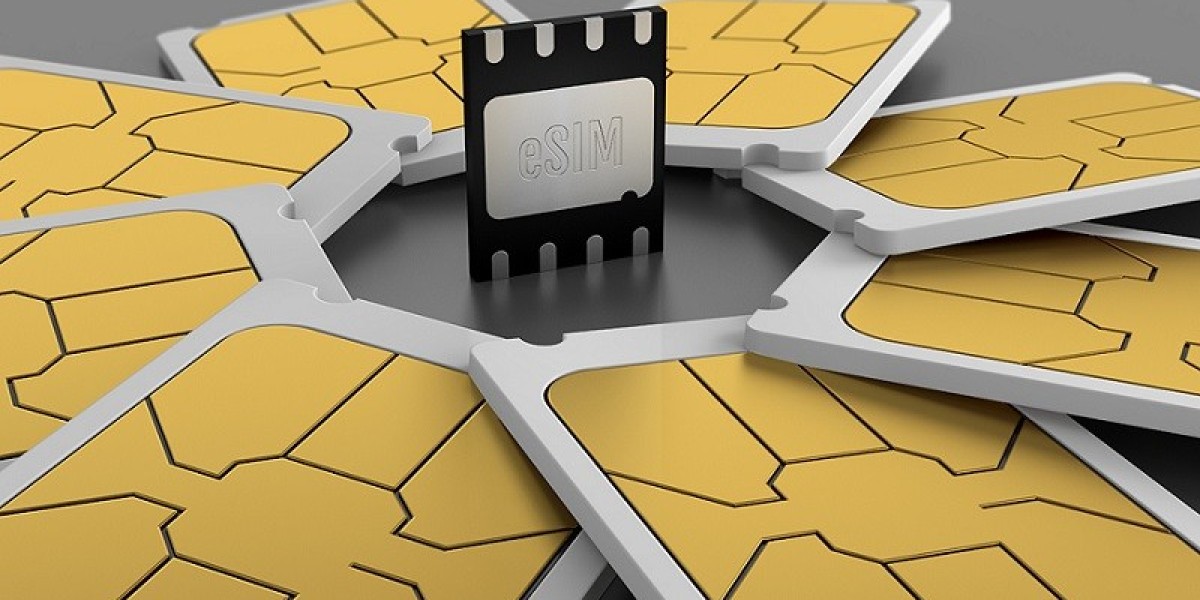eSIM Market: A Comprehensive Analysis of Trends, Players, and Regional Dynamics
The eSIM Market is experiencing rapid growth driven by technological advancements, increasing adoption of IoT devices, and the rising demand for flexible, secure, and space-efficient SIM solutions. Unlike traditional SIM cards, eSIMs are embedded directly into devices, enabling remote provisioning and management, which significantly enhances user convenience and operational efficiency. This evolving landscape positions the eSIM market as a critical component in the future of mobile connectivity, IoT deployment, and seamless device integration across various sectors.
Market Analysis
The global eSIM market has witnessed exponential growth over recent years, propelled by the proliferation of smartphones, wearables, connected cars, and IoT devices. The market is projected to expand at a compound annual growth rate (CAGR) of approximately 31.40% during the forecast period 2024-2030. Factors such as the increasing need for streamlined device management, the shift towards eUICC (embedded Universal Integrated Circuit Card) technology, and the rising consumer preference for flexible and multi-network connectivity options are key drivers. Moreover, telecom operators are increasingly adopting eSIM technology to reduce logistics costs associated with traditional SIM cards and to offer personalized, multi-network plans. The COVID-19 pandemic further accelerated digital transformation initiatives, emphasizing the importance of remote provisioning and contactless solutions, thereby fueling the adoption of eSIMs across various devices and industries.
Get a Sample Report + All Related Graphs & Charts:
https://www.marketresearchfuture.com/sample_request/6619
Market Key Players
The eSIM market features a competitive landscape with several prominent players innovating and expanding their offerings. Major industry participants include Apple Inc., which has integrated eSIM technology into its latest iPhone models, facilitating dual SIM capabilities. Deutsche Telekom AG, one of the earliest adopters of eSIM technology, continues to expand its eSIM offerings across Europe. Qualcomm Technologies Inc. provides essential chipsets and modules that enable eSIM functionality in a broad range of devices. STMicroelectronics and Infineon Technologies are notable for their eUICC chip solutions, supporting device manufacturers worldwide. Other significant players include Ericsson, Cisco, and Gemalto (a subsidiary of Thales Group), which provide comprehensive eSIM management platforms and connectivity solutions. The market is characterized by strategic partnerships, mergers, and collaborations aimed at enhancing eSIM ecosystem interoperability, security, and global reach.
Market Segmentation
The eSIM market can be segmented based on application, end-user, and region. By application, the market is divided into smartphones, wearables, connected vehicles, tablets, and IoT devices. Smartphones currently dominate the market, owing to their widespread adoption and the integration of eSIMs for dual SIM functionality. Wearables such as smartwatches and fitness trackers also represent a substantial segment due to their compact design and the need for remote provisioning. Connected vehicles and IoT devices are emerging segments, with the automotive industry leveraging eSIMs for embedded connectivity solutions, remote diagnostics, and over-the-air updates. In terms of end-user, the market caters to consumers, enterprises, and telecom operators, each benefiting from the flexibility and cost-efficiency of eSIM technology.
Regionally, North America and Europe lead the market, driven by early adoption, advanced telecom infrastructure, and innovative device ecosystems. Asia-Pacific is expected to witness the fastest growth, fueled by expanding smartphone penetration, government initiatives supporting IoT deployment, and increasing investments by telecom providers.
Market Dynamics
The eSIM market dynamics are influenced by several factors, including technological innovation, regulatory frameworks, and consumer preferences. The shift from physical SIM cards to eSIMs is primarily driven by the need for more compact device designs and enhanced security features. The standardization efforts by GSMA (Global System for Mobile Communications Association) have facilitated interoperability and global adoption of eSIM solutions. However, challenges such as device compatibility issues, security concerns related to remote provisioning, and the need for widespread infrastructure upgrades pose hurdles.
Additionally, the transition from traditional SIM cards to eSIMs requires significant changes in telecom operators’ business models, including new provisioning and management platforms. The growing emphasis on IoT and smart devices creates a substantial opportunity for eSIMs, particularly in industries like automotive, healthcare, and industrial automation, where seamless connectivity is vital. The increasing focus on data security, privacy regulations, and user authentication also influences market dynamics, prompting innovations in secure eSIM solutions.
Recent Developments
Recent developments in the eSIM market highlight technological advancements and strategic collaborations. Apple’s recent iPhone models continue to enhance eSIM functionalities, allowing users to activate plans remotely and switch carriers without swapping physical SIMs. Telecom operators such as T-Mobile and Vodafone have expanded their eSIM offerings, providing more flexible and global plans for consumers and enterprise clients. The deployment of eUICC in connected cars is gaining momentum, with automakers partnering with chip manufacturers to embed eSIMs for enhanced connectivity and over-the-air updates. The adoption of eSIM management platforms by telecom providers has also increased, enabling remote provisioning, subscription management, and security enhancements.
Furthermore, regulatory bodies across different regions are working towards establishing standards and policies to facilitate secure and interoperable eSIM deployments, fostering global market growth. The integration of 5G technology is expected to further accelerate eSIM adoption, supporting higher data rates, lower latency, and more reliable connectivity for next-generation devices.
Regional Analysis
The regional landscape of the eSIM market reveals varying adoption rates and growth potentials. North America remains at the forefront, driven by early adoption of new mobile technologies, robust infrastructure, and a high concentration of smartphone and IoT device manufacturers. The United States and Canada have been pivotal in deploying eSIM-enabled devices and services, with major telecom providers investing heavily in eSIM infrastructure. Europe closely follows, with countries like Germany, the UK, and France adopting eSIMs rapidly due to supportive regulatory environments, innovative telecom providers, and a high penetration of connected devices. The Asia-Pacific region is expected to witness the fastest growth rate, supported by massive smartphone markets in China, India, and Southeast Asia, along with increasing government initiatives promoting IoT deployment and digital transformation.
Countries such as China and Japan are also investing in 5G infrastructure, which complements eSIM adoption. Meanwhile, regions like Latin America and the Middle East are gradually embracing eSIM technology, primarily driven by telecom operators seeking to optimize network management and expand services to underserved markets. Overall, the regional analysis underscores a global shift towards eSIM adoption, with emerging markets offering significant growth opportunities due to evolving technological landscapes and increasing mobile device penetration.
Browse Full Report Details:
https://www.marketresearchfuture.com/reports/esim-market-6619
Top Trending Articles:
Contact Us:
Market Research Future (Part of Wantstats Research and Media Private Limited)
99 Hudson Street, 5Th Floor
New York, NY 10013
United States of America
+1 628 258 0071 (US)
+44 2035 002 764 (UK)








